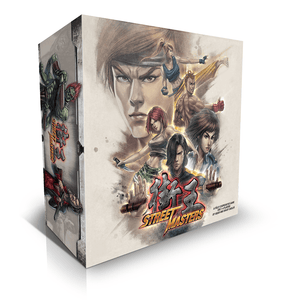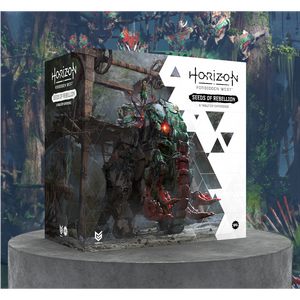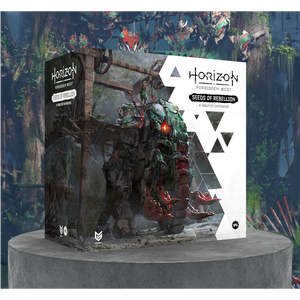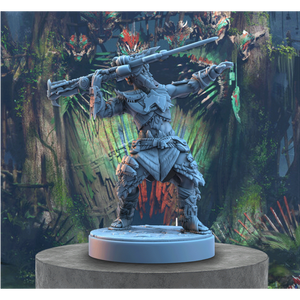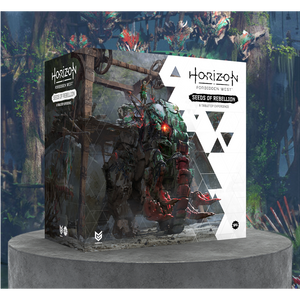Welcome back to Volume 2 of the Creature Chronicles!
I hope you enjoyed last month’s maiden voyage for this blog series where I discussed the Hydra’s journey to becoming the roleplaying mainstay it is now.
In case you’re joining us for the first time, Hi! I’m your host, Dylan Wilby – Steamforged Games’ Copywriter – and each month I’m gonna be investigating a different RPG monster, diving into its journey through history in folklore, myth, literature, and popular culture.
(And I’m the blog’s Editor, Rich August – Steamforged Games’ Lead Writer – you'll hear more from me later in the blog but I'll be dropping in thoughts and behind-the-scenes info throughout the series.)
This blog series comes as I, a self-confessed RPG noob, journey to research the various creatures appearing in our incredible roleplaying sets, Epic Encounters. (Ahem, mandatory salesman moment: make sure you check them out here!)
Now that the evenings are drawing in, the trees are turning golden, and the season of mist and mellow fruitfulness sets in, it’s the perfect time to settle into an armchair by the fire with a cuppa as we turn our attention to the history of orcs through the ages!

(And no, I didn’t just pick orcs at random. We’ve got our very own take on the orc in Epic Encounters: Hall of the Orc King and I’d be delighted if you’d give it a look!)
Orcs vs Goblins
Where else to begin but with Tolkien? (I mean, I’d start with Orcus, but YMMV - Ed.)
Well, actually, there are other good places to start – particularly if you’re of the chronological persuasion – but I didn’t realise that when I embarked on this month’s Chronicle.
I’d got it into my head that Tolkien actually invented orcs. There’s some truth to that, especially in the ‘modern’ sense of orcs, but it’s certainly not the full picture.
Interestingly, in The Hobbit, Tolkien’s first foray into Middle-earth (Although, as every Tolkien nerd is now shouting, The Hobbit wasn’t set in Middle-earth until he started writing Lord of the Rings… - Ed.), there’s precious (sorry) little mention of orcs. The race of ugly, twisted humanoid servants of evil living under the Misty Mountain are referred to as goblins, a race with a much clearer fantasy lineage.
It’s fair to say they’re synonymous with the orcs of The Lord of the Rings, so it’s a linguistic rather than categorical distinction. So where did the word ‘orc’ come from? And what sets orcs apart from your run-of-the-mill goblin?
The OG Orcs
That’s quite a simple one, really. It’s derived from an old English word, famously employed in Tolkien's beloved Beowulf, the poem about a mythical hero’s confrontations with various fearsome monsters. I’d love to wax lyrical about Beowulf here (because IT’S AMAZING) but it’s not particularly pertinent, so suffice to say, Beowulf inspired Tolkien a lot.

Anyway, in line 112 of Beowulf, a selection of evil creatures are referenced as arising from Grendel’s lair, including, “eotenas ond ylfe ond orcnéas”. A common translation of these three species of evil is ‘ettens’, ‘elves’, and ‘demons’, or even ‘demon-corpses’.
Orcnéas, (I’m reliably informed by that great linguist, Google), is a compound of orc (from the Latin orcus, the underworld) and neas, or corpses. (The supernatural in Old English, and Norse, poetry of the time is often centred around corpses, and burial rites. In Eastern Europe, these kind of coalesced into what we now know as vampires. But we got orcs…so, zombie orcs? - Ed.)
As for ylfe, or elves, well… Apparently, they make one or two appearances in Tolkien’s Legendarium! For eotenas, or ettens (i.e. giants), would it be too much of a stretch to imagine they ended up as ents? (You’re right; that’s where the term comes from. Ents are probably meant to be more like giants than the treemen we know them as, but I think treemen are cooler… - Ed). Perhaps, but it’s an interesting thought nonetheless.
Orcs in RPGs
So, in a tremendously roundabout way, that brings us pretty much straight to orcs in roleplaying. (“Wait, it’s all Tolkien?” “Always has been.”) Gary Gygax wanted a creature his characters could fight, and be afraid of, and the poor orc fitted the bill exactly. Human enough to elicit something like recognition, but bestial enough to be frightening, the orc became the perfect enemy for lowish level dungeon delvers to try themselves against.

Over the years, and through the many different Monster Manual, Fiend Folios, Creature Catalogues and the like, the orc has been refined and expanded—the Olog turned up at some point, offering a new threat to overcome, for players whose palates were jaded with the standard banquet of orcish delights, and soon orcs were something much more than just a host of faceless villains. Soon, they were a people, with a culture, and a patron deity, and all the additional bits necessary to make characters stop and ask: ‘should we be killing these guys at all?; But that topic, a good one, is a little outside the scope of this blog, so let’s end with a toast to the orc—from their humble beginnings, to the pop cultural phenomenon we know them as today.
Behind the Epic Encounters Orcs
So, let’s start with the heavy stuff: Orcs have often been depicted in problematic ways. Ways which position them as closely analogous to certain real world peoples, and do so through the most unflattering, condescending, and sometimes flat out racist, of lenses. I’m not going to go into detail on such things here, but I’m always trying to be conscious of the discourse surrounding these elements of our hobby. As a result, I wanted to draw on British history to shape our orcs, to create formidable, threatening orcs but which didn’t risk perpetuating racist stereotypes.
Orcs should be dangerous raiders, and as a person with a deep interest in history, the most formidable raiders in British history (and popular consciousness) are the vikings. So that was the starting point for the adventure and for the way we stylised the orcs. We wanted a feeling of the cold, barren north. Of raiders appearing, bringing fire and pillage, and then vanishing. We also wanted to find some cool new angles - orcs have been mounted on boars before, maybe even wolves. But bears? And not just any bears, but polar bears… that’s both an amazing miniature to bring to a tabletop, and something entirely fitting with the viking theme. The Icelandic sagas mention bears a great deal, and our popular conception of the ‘berserker’ is closely woven with notions of ‘bear cults’ (the term literally means ‘bear shirt’, from ‘ber’ as bear, and serk meaning ‘shirt’). While the historicity of the berserker is dubious, that doesn’t matter. As one of my favourite podcasters (James Holloway of the magnificent Monster Man—google it!) says, ‘bad history makes for great roleplaying’, and there’s a lot of bad history in the Orc King set.
For instance, Norse culture was deeply literate and highly organised; it didn’t solely revolve around drunken fighting bouts and bloodthirstiness. But this isn’t history, it’s fantasy. So I threw in all the most exciting stuff I could think of. Gladiators! Brewmasters with mead and ale and flagons! Now, where the gigantic chef came from, I can only blame my imagination. I just thought he’d look cool. But that’s what fantasy RPGs should do; blend ideas together into something, hopefully, unique. More next time!
____
Well, now you know the journey it took to get here.
Thanks for reading, and keep an eye out for Volume 3! What creatures do you want me to cover next time?
Dylan
Ready to get Orcs into your RPG?
About the Author

|
Hey, I’m Dylan, Copywriter for Steamforged Games. I’ve always been enthralled by words and language, and am a huge gamer (both board and video), so writing about games for a living is pretty much the dream! I’m also big into music, folklore, politics, and have written bits and pieces for TechRaptor and When The Horn Blows over the years. Favourite board game: Catan. Favourite video game: DARK SOULS. |

 Join us on Discord
Join us on Discord


